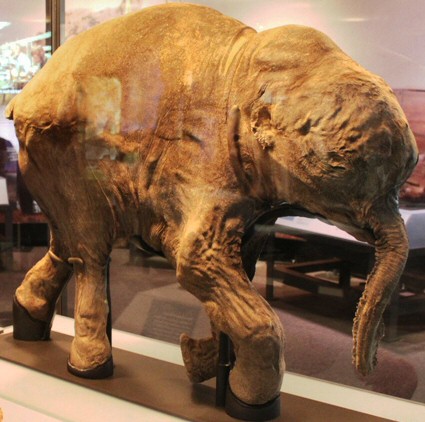
(We promise not to talk about Jurassic Park.)
From the New York Times Magazine:
This question of “human ingenuity” approaches one of the least commented upon but most significant points about de-extinction. The term “de-extinction” is misleading. Passenger pigeons will not rise from the grave. Instead, band-tailed-pigeon DNA will be altered to resemble passenger-pigeon DNA. But we won’t know how closely the new pigeon will resemble the extinct pigeon until it is born; even then, we’ll only be able to compare physical characteristics with precision. Our understanding of the passenger pigeon’s behavior derives entirely from historical accounts. While many of these, including John James Audubon’s chapter on the pigeon in “Ornithological Biography,” are vividly written, few are scientific in nature. “There are a million things that you cannot predict about an organism just from having its genome sequence,” said Ed Green, a biomolecular engineer who works on genome-sequencing technology in the U.C.S.C. paleogenomics lab. Shapiro said: “It’s just one guess. And it’s not even a very good guess.”
Shapiro is no more sanguine about the woolly-mammoth project. “You’re never going to get a genetic clone of a mammoth,” she said. “What’s going to happen, I imagine, is that someone, maybe George Church, is going to insert some genes into the Asian-elephant genome that make it slightly hairier. That would be just a tiny portion of the genome manipulated, but a few years later, you have a thing born that is an elephant, only hairier, and the press will write, ‘George Church has cloned a mammoth!’ ” Church, though he plans to do more than just alter the gene for hairiness, concedes the point. “I would like to have an elephant that likes the cold weather,” he told me. “Whether you call it a ‘mammoth’ or not, I don’t care.”
The processes they propose to use (and it is anyone’s guess whether they will work) are fascinating, but some are asking, why stop at bringing back extinct animals?
What is coming will go well beyond the resurrection of extinct species. For millenniums, we have customized our environment, our vegetables and our animals, through breeding, fertilization and pollination. Synthetic biology offers far more sophisticated tools. The creation of novel organisms, like new animals, plants and bacteria, will transform human medicine, agriculture, energy production and much else. De-extinction “is the most conservative, earliest application of this technology,” says Danny Hillis, a Long Now board member and a prolific inventor who pioneered the technology that is the basis for most supercomputers. Hillis mentioned Marshall McLuhan’s observation that the content of a new medium is the old medium: that each new technology, when first introduced, recreates the familiar technology it will supersede. Early television shows were filmed radio shows. Early movies were filmed stage plays. Synthetic biology, in the same way, may gain widespread public acceptance through the resurrection of lost animals for which we have nostalgia. “Using the tool to recreate old things,” Hillis said, “is a much more comfortable way to get engaged with the power of the tool.”
“By the end of this decade we’ll seem incredibly conservative,” Brand said. “A lot of this stuff is going to become part of the standard tool kit. I would guess that within a decade or two, most of the major conservation organizations will have de-extinction as part of the portfolio of their activities.” He said he hoped to see the birth of a baby woolly mammoth in his lifetime. The opening line of the first Whole Earth Catalog was “We are as gods and might as well get good at it.” Brand has revised this motto to: “We are as gods and HAVE to get good at it.” De-extinction is a good way to practice.
If you need to practice, you are not a god.
Curiously, Jurassic Park author (okay, okay) Michael Crichton called consensus science an extremely pernicious development. And aspiring mammoth cloner George Church praised Steve Meyer’s Darwin’s Doubt.
Maybe they could recreate the Cambrian explosion? Talk about synergy.
Follow UD News at Twitter!